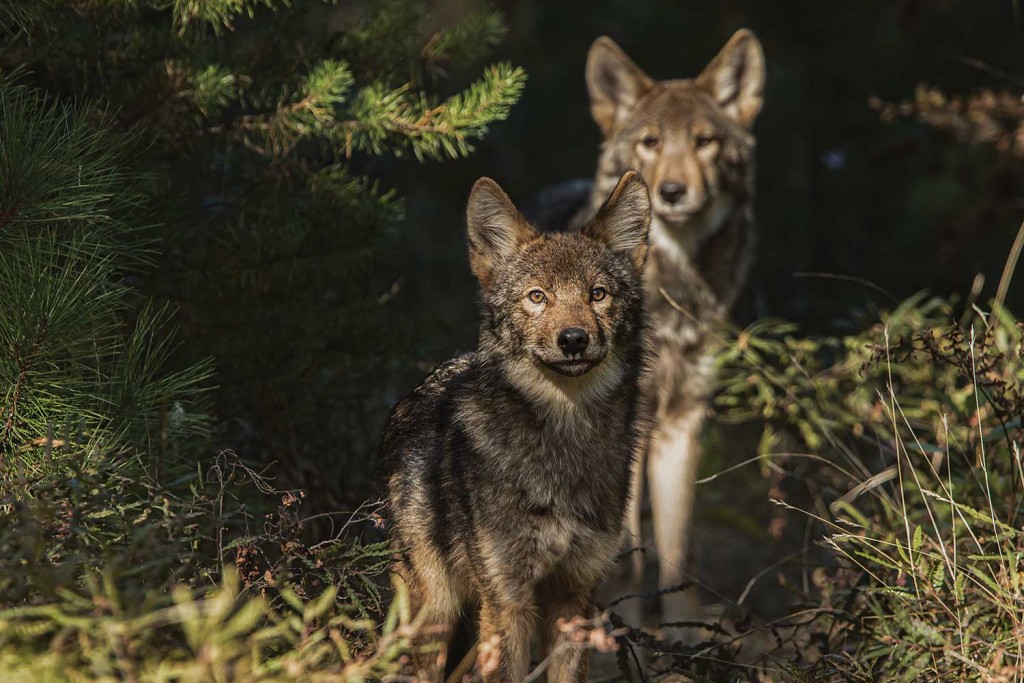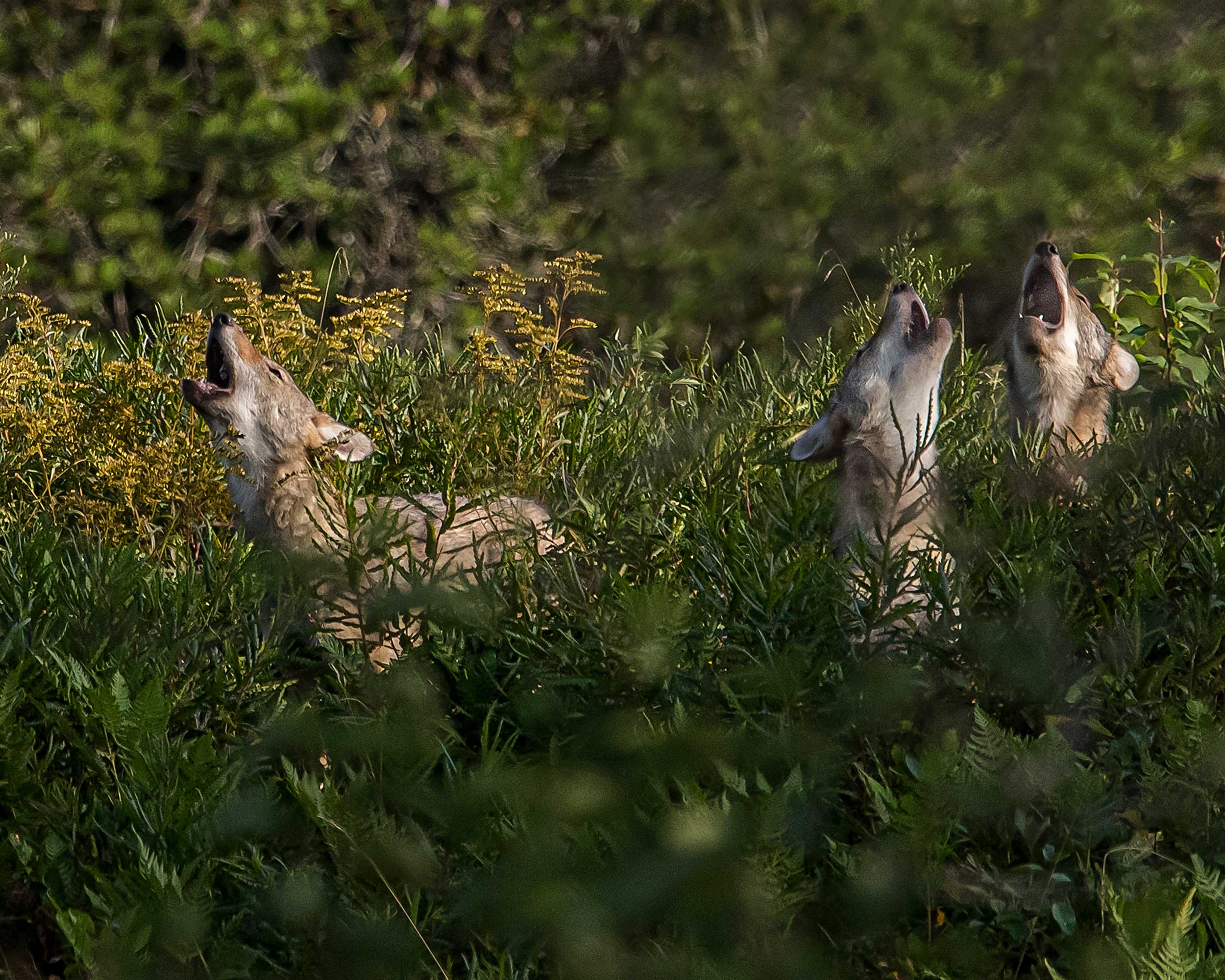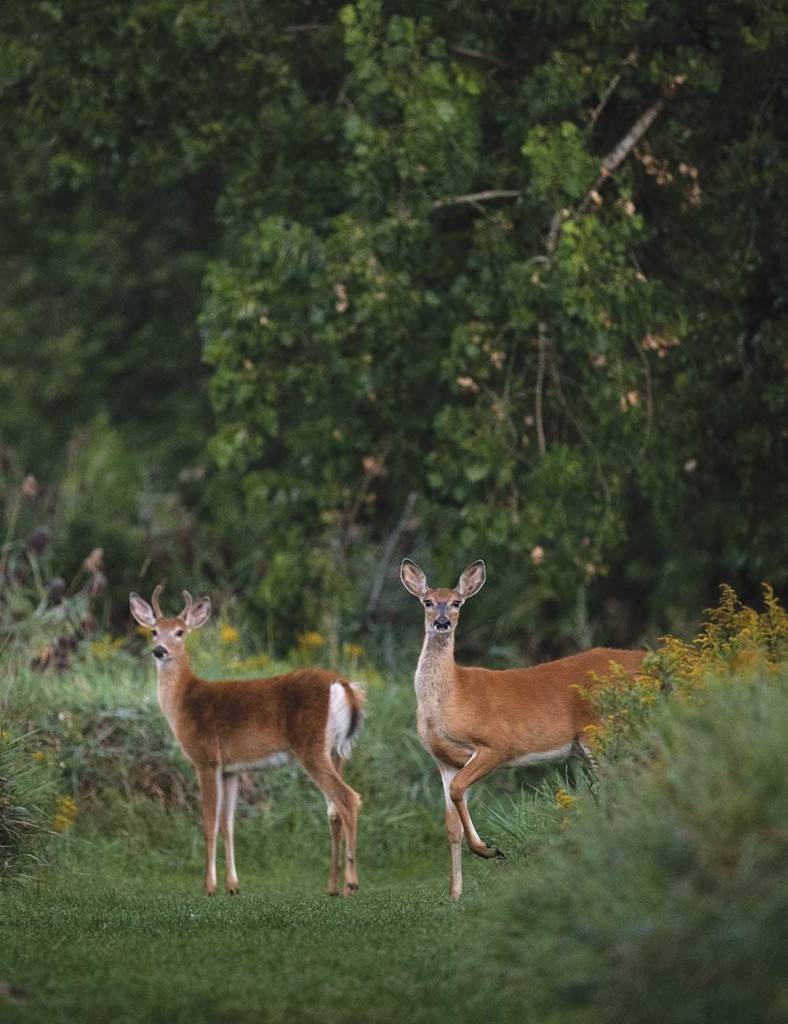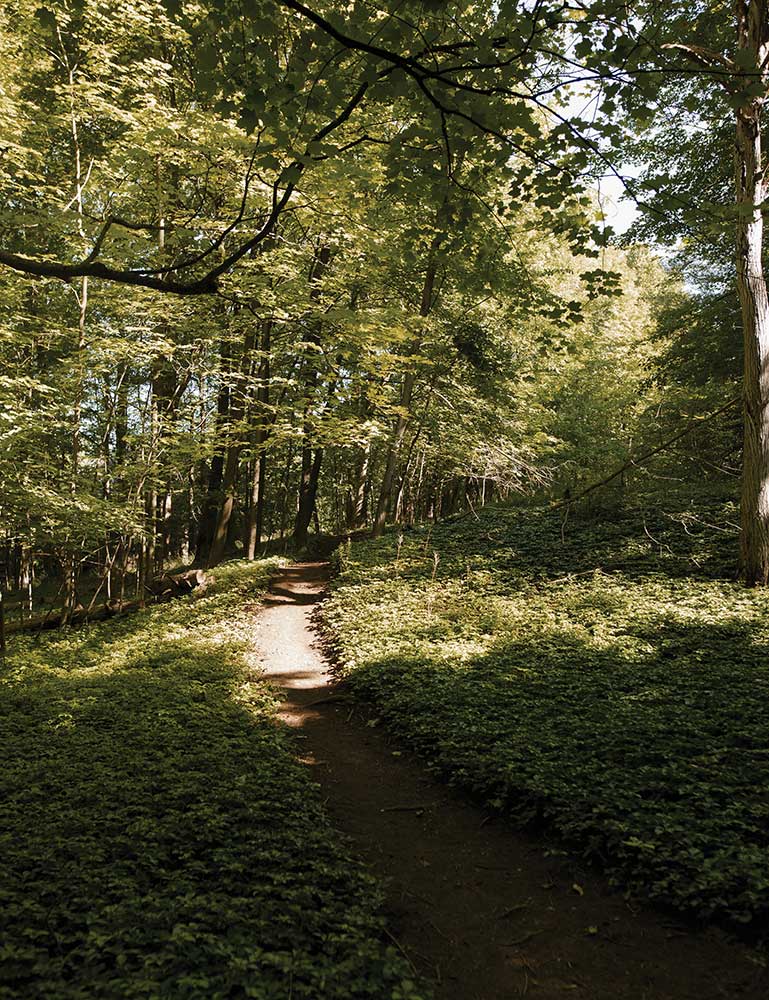Stories
Who’s Afraid of the Big Bad Wolf?
We fear wolves; we love deer. But to protect our ecosystems, we have to rattle our preconceptions about these two majestic, misunderstood animals.
Text—Guillaume Rivest
Photos—Alexandra Côté-Durrer & Michael Runtz (wolves)
In partnership with

What if the health of ecosystems depends on our ability to get past our biases about nature? Maybe it’s time for us to redefine our relationships to the large predators that we fear and the charming herbivores that we cherish. After all, each species is a cog in a well-oiled machine that’s been refined over millions of years of evolution. The Société des Établissements de Plein Air du Québec (Sépaq) is attempting to protect this fragile balance, which is often threatened by our misconceptions.
The Laurentians
___
protecting predators
In the Western collective imagination, wolves represent tremendous danger. They have long fallen prey to irrational fears, hunted to local extinction in many areas. Yet wolves’ murderous potential is largely overstated; between 1890 and 2001 in North America, there were only 22 lethal attacks on humans. The role they play in balancing natural environments, however, is often vastly underestimated.
The ecological concept of trophic cascade illustrates how the interactions between predator and prey affect the health and overall productivity of an ecosystem.
When a pack of wolves inhabits a territory, the behaviour of the large herbivores in the area changes. The herds move more frequently to avoid being hunted, and their numbers decrease. This, in turn, reduces pressure on the plant cover, reviving the flora. By contrast, if you remove wolves from the equation, deer and moose become less fearful and multiply. They eat beyond the ecosystem’s capacity to sustain, and it grows impoverished.
The most striking example of this phenomenon comes from Yellowstone National Park in the United States, where wolves were wiped out in the 1920s. In their absence, elk exerted significant pressure on several plant species, including young trees. The flora was so severely affected that elk were beginning to starve to death.

Wolves were reintroduced to the park in 1995. The results are unambiguous: in 25 years, they have totally transformed the ecosystem for the better. By reducing elk populations and driving them from fragile environments, the wolves have allowed the vegetation to recover and thrive. Thanks to a fresh proliferation of plants, trees, and shrubs, other animal species have recovered too, including grizzly bears, hares, beavers, and some birds. The wolves have also helped restore the park’s riparian strips by diverting large ruminants from the waterways, where they were contributing to soil erosion and defoliation. Even the numbers of insect pollinators have increased. And ultimately, the prey itself benefits from the return of its predator; by picking off the weakest and sickest individuals, wolves help improve the health of the park’s elk population.
Wolves are relatively populous in some areas of Québec, and they often get bad press. So much so that in the Parc national du Mont-Tremblant, Sépaq is doing everything it can to protect them. Hugues Tennier, head of the organization’s conservation and education department, explains that the predator’s reputation is unjustified.

“Wolves help regulate the deer, moose, and small mammal populations. They stabilize the ecosystem, in a way.”
However, there are many challenges. “Our problem is that wolves need a huge territory in order to thrive, and the Parc national du Mont-Tremblant is not big enough. According to our studies, our wolf populations extend up to 25 km outside the protected area, which is often where they die, from hunting, trapping, or being hit by cars.” Hunting and trapping are not obstacles to a healthy wolf population, so long as balance is sought. Habitat loss is another matter entirely: it’s the greatest danger wolves face. The natural areas necessary for wolf population growth are gradually disappearing, giving way to resorts. Outside the borders of the park, the land is increasingly fragmented and altered, compromising the survival of the species.
The other big challenge is contact with humans within the park, which receives many visitors. It can be a real problem if wolves get used to humans, as occurred in 2006 and 2007. “We even had a wolf steal a beach ball away from kids,” says Tennier. “That was not an easy situation to manage. Some people would leave food out in the hopes of attracting and observing one.” Park officials developed a wolf management plan with the aim of restoring their healthy fear of humans. First, they educated visitors on how to behave; second, they pushed the more intrepid wolves back through various techniques, ranging from a simple scream to cayenne pepper. Their efforts were successful: the chances of stumbling on a wolf are now very, very slim—and there’s a protocol in place if it happens. “My professional reflex is always there. But the fact remains that every time I see a wolf, I feel terribly privileged,” concludes Tennier.

Montérégie
___
containing prey
In Mont-Saint-Bruno and Îles-de-Boucherville provincial parks, the situation is entirely different. As pockets of nature in the middle of an urban jungle, these parks are perfect laboratories for introducing city dwellers to the great outdoors. “A lot of fresh converts come here. Every time, they’re surprised by the diversity in these places,” explains Nathalie Rivard, head of conservation and education for both parks.
The challenges facing these parks are not the same as those in the Laurentians. Here the concern is with the prey rather than the predators. Without natural regulatory mechanisms, white-tailed deer have become so numerous, they’re threatening the integrity of the ecosystems. “Parc national du Mont-Saint-Bruno is home to many rare species, and our mature forests are breathtakingly beautiful. We’re worried about the regeneration of the flora,” explains Rivard. According to her, it’s become almost impossible. “The undergrowth is completely devoid of vegetation. In fact, there’s no undergrowth anymore. Some plant species have disappeared from our parks because the deer love them so much. In the 1980s, they were everywhere.” In the Mont-Saint-Bruno and Îles-de-Boucherville parks, there are 18 and 30 deer per square kilometre, respect‑ ively. For the flora and fauna to be in balance, there should be no more than five.
The old farmlands lying within the Parc national des Îles-de-Boucherville are protected, but trees will never grow on much of them because of the deer. “They eat all they can. We planted 20,000 trees and shrubs on some of the transferred farmlands. To give them a shot at growing, we had to put up six kilometres of eight-foot-tall fence,” explains Rivard.


In addition to the destruction of vegetation, the overabundance of deer also means more vehicle collisions and the potential for increased spread of Lyme disease.
“A regional committee is studying the issue,” says Rivard. “It’s not just the parks that have problems with the deer overpopulation; the cities and municipalities also have to live with the consequences.”
Fences and plastic sleeves are used to protect trees, but these solutions address the symptom, not the cause. “Reintroducing wolves would probably regulate the population, but I don’t think the people of Saint-Bruno would be very fond of us if we brought them back to our park,” laughs Rivard. In any event, the Parc national du Mont-Saint-Bruno—just like Îles-de-Boucherville—is too small for a wolf pack.
“People think deer are beautiful. They love to watch them. So we have to explain that, in a healthy natural environment, the deer probably wouldn’t be so close,” Rivard says. “We’re definitely taking people’s love of deer into account in searching for a solution. But ultimately, we have to make the decision that’s best for the ecosystems we’re trying to preserve.” And that also means protecting the deer themselves from the devastating effects of their own overabundance.

The situations in the Laurentians and in Montérégie are very different, but in both cases, our relationship to nature—and our prejudices—are on display. What if the predator that we so fear was actually our staunchest ally? And what if the deer that we find so sweet could, when too numerous, destabilize an entire ecosystem?
Sépaq understands that everything changes through education and awareness. We have to rattle our own preconceptions for the well-being of our ecosystems. A forest destroyed by overgrazing may appear normal to someone who has spent their life in the city, but the same landscape may seem desolate to someone who has spent their life in the forest. The way to tell a healthy ecosystem from a sick one is surely to get out in nature more often. It’s where I spend most of my free time. In more than 20 years of expeditions, I’ve heard the howls of a wolf pack just once—last summer, from a canoe. To this day, it remains the most beautiful concert that nature has ever offered me. ■
Guillaume Rivest is a columnist and freelance journalist from Abitibi-Témiscamingue. An avid lover of nature and the outdoors, he holds a bachelor’s degree in applied political science and a master’s in environmental studies. He works on the Moteur de Recherche program on Ici Radio- Canada Première.
For more than 30 years, the Société des Établissements de Plein Air du Québec (Sépaq) has been promoting and ensuring the sustainability of the land and public assets entrusted to it, for the benefit of its clientele, Québec’s regions, and future generations.
Sépaq boasts 23 provincial parks, as well as one marine park jointly managed with the federal government—the Saguenay–St. Lawrence Marine Park. All in all, this adds up to more than 7,017 km2 of unique protected area.
With conservation as its top priority, Sépaq closely monitors the health of these natural gems to ensure its core mission is fulfilled.
Never Miss Another Issue
Two issues per year
25% OFF previous issues
Free Shipping in Canada